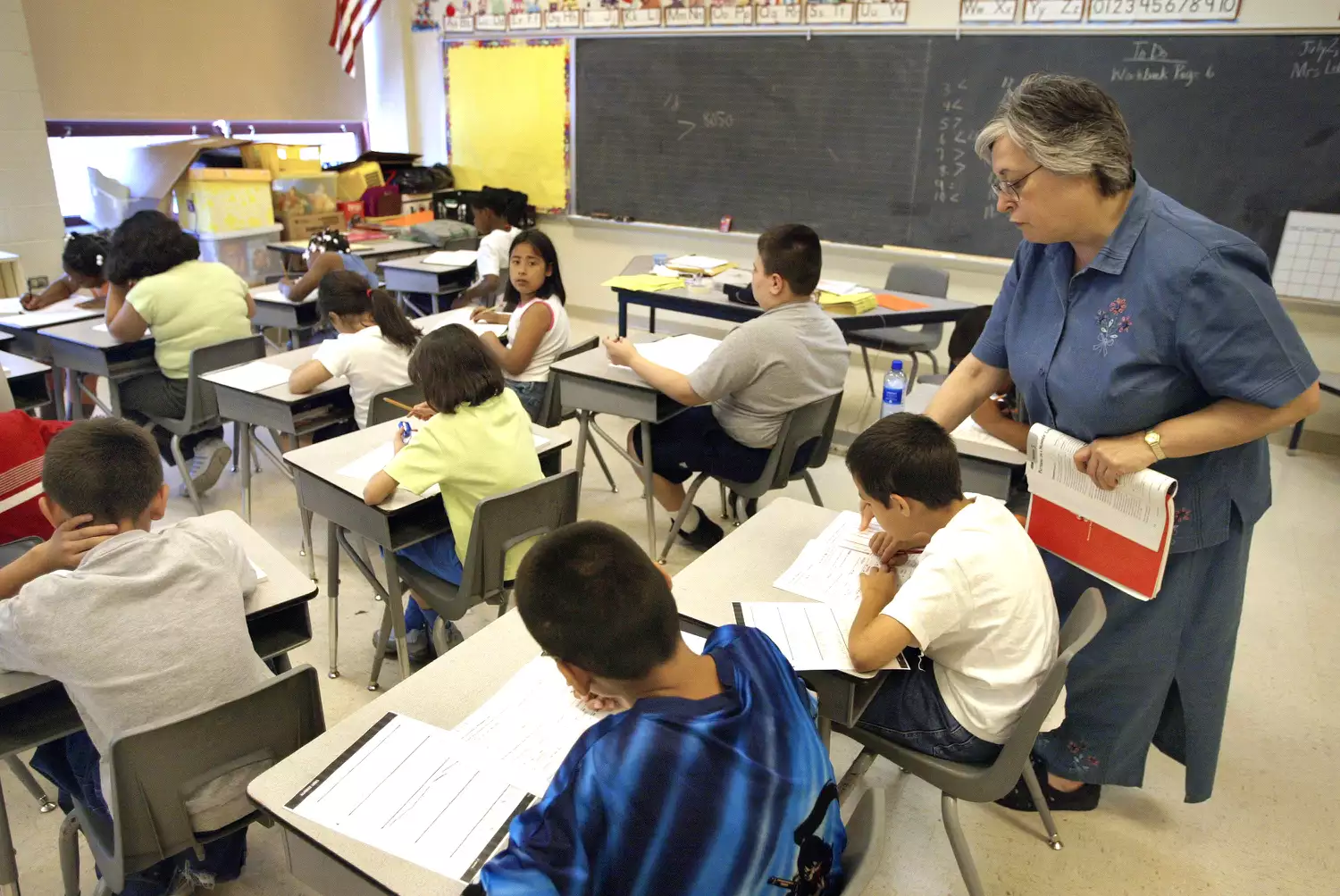
Teachers teach content then test trainees. Tests seek to see what students have actually discovered.
At the school level, teachers develop tests to measure their trainees’ understanding of particular content or the efficient application of crucial believing skills. Such tests are utilized to evaluate student knowing, ability level development and scholastic accomplishments at the end of an educational duration, such as completion of a task, system, course, term, program or school year.
These tests are created as summative evaluations.
Summative Tests
According to the Glossary for Educational Reform, summative evaluations are specified by three criteria:
They are used to identify whether trainees have actually learned what they were expected to discover or to level or degree to which trainees have found out the product.
They may be used to determine discovering development and accomplishment and to evaluate the efficiency of educational programs. Tests may also determine trainee progress towards specified enhancement goals or to identify trainee placement in programs.
They are tape-recorded as scores or grades for a student’s academic record for a report card or for admission to higher education.
At the district, state, or national level, standardized tests are an additional type of summative evaluations. The legislation passed in 2002 referred to as the No Child Left Behind Act mandated annual screening in every state. This screening was linked to federal financing of public schools.
The arrival of the Common Core State Standards in 2009 continued state-by-state screening through different screening groups (PARCC and SBAC) to determine trainee preparedness for college and profession. Lots of states have actually because established their standardized tests. Examples of standardized tests consist of the ITBS for elementary trainees; and for secondary schools the PSAT, SAT, ACT as well as Advanced Placement tests.
Standardized Testing Pros and Cons
Those who support standardized tests see them as an unbiased measure of student efficiency. They support standardized screening as a method to hold public schools responsible to the taxpayers who fund the school or as a means to enhance the curriculum in the future.
They do not like tests since tests require time that might be used for instruction and innovation. They argue that non-English speakers and students with special needs may be at a downside when they take standardized tests.
Finally, testing can increase anxiety in some, if not all, students. Fearing a test may be connected to the concept that a test can be a trial by fire: Indeed, the meaning of the word test came from the 14th-century practice of utilizing fire to heat a small earthen pot– called testum in Latin– to identify the quality of precious metal. In this method, the process of testing reveals the quality of a trainee’s academic achievement.
There are a number of factors that instructors and school districts administer tests to trainees.
01
of 06
Checking Assesses What students Have Learned
The obvious point of class testing is to evaluate what trainees have learned after the completion of a lesson or unit. When the class tests are connected to well-written lesson goals, a teacher can evaluate the outcomes to see where most of students did well or require more work. This details might help the teacher create small groups or to use differentiated instructional strategies.
Educators can likewise use tests as mentor tools, specifically if a trainee did not understand the questions or instructions. Educators may likewise utilize tests when they are discussing student progress at group meetings, during student support programs or at parent-teacher conferences.
02
of 06
Evaluating Identifies Student Strengths and Weaknesses
Another usage of tests at the school level is to determine trainee strengths and weaknesses. One efficient example of this is when instructors utilize pretests at the beginning of systems to learn what trainees already know and find out where to focus the lesson. There is a variety of literacy tests that can help target a weak point in decoding or accuracy in addition to learning style and numerous intelligences tests to help teachers discover how to fulfill the needs of their trainees through instructional techniques.
03
of 06
Checking Measures Effectiveness
Till 2016, school financing had actually been determined by trainee performance on state tests. In a memo in December of 2016, the U.S. Department of Education explained that the Every Student Succeeds Act (ESSA) would require fewer tests. In addition to this requirement came a suggestion for using tests, which check out in part:
” To support State and local efforts to reduce testing time, area 1111( b)( 2 )( L) of the ESEA enables each State, at its discretion, the alternative to set a limit on the aggregate amount of time devoted to the administration of assessments throughout an academic year.”
This shift in mindset by the federal government came as a reaction to issues over the variety of hours schools use to particularly teach to the test as they prepare students to take these exams.
Some states already use or prepare to utilize the results of state tests when they evaluate and give benefit raises to instructors. This use of high-stakes screening can be controversial with teachers who believe they can not control the many elements (such as hardship, race, language or gender) that can influence a trainee’s grade on an exam.
In addition, a nationwide test, the National Assessment of Educational Progress (NAEP), is the “biggest nationally representative and continuing evaluation of what America’s students understand and can do in different disciplines,” according to the NAEP, which tracks the progress of U.S. trainees every year and compares the results with worldwide tests.
04
of 06
Testing Determines Recipients of Awards and Recognition
The PSAT/NMSQT is given in the 10th grade to students across the nation. When trainees become National Merit Scholars due to their results on this test, they are offered scholarships.
The Presidential Youth Fitness Awards Program allows teachers to celebrate students for reaching their exercise and physical fitness objectives.
05
of 06
Checking Can Provide College Credit
Advanced Placement examinations provide trainees with the chance to earn college credit after effectively finishing a course and passing the examination with high marks. While every university has its own guidelines on what ratings to accept, they might provide credit for these examinations. In many cases, students can start college with a term or even a year’s worth of credits under their belts.
Many colleges offer a dual-enrollment program to high school trainees who enlist in college courses and receive credit when they pass the exit test or pass the class. According to the Department of Education, double enrollment is specified as “… trainees (who) register in postsecondary coursework while likewise enrolled in high school.” When students are juniors or senior citizens, they might have the opportunity to enroll in college courses that are not part of their high school curriculum. Other terms used could be “early college” or “double credit.”
On the other hand, programs such as the International Baccalaureate (IB) “evaluate trainee work as direct proof of achievement” that trainees may use in college applications.
06
of 06
Evaluating Judges Student Merit for an Internship, Program or College
Tests have actually generally been utilized as a way to evaluate a student based on benefit. The SAT and ACT are two typical tests that form part of a trainee’s entryway application to colleges. In addition, students may be required to take extra exams to get into special programs or be positioned correctly in classes. A student who has actually taken a couple of years of high school French might be required to pass a test to be placed in the right year of French instruction.




